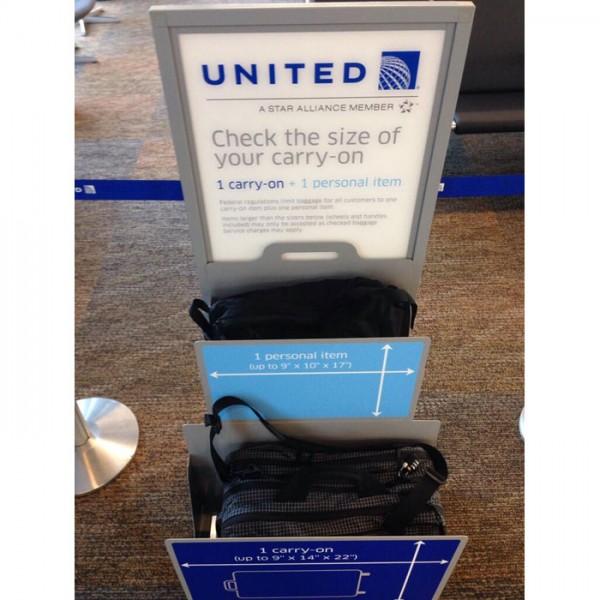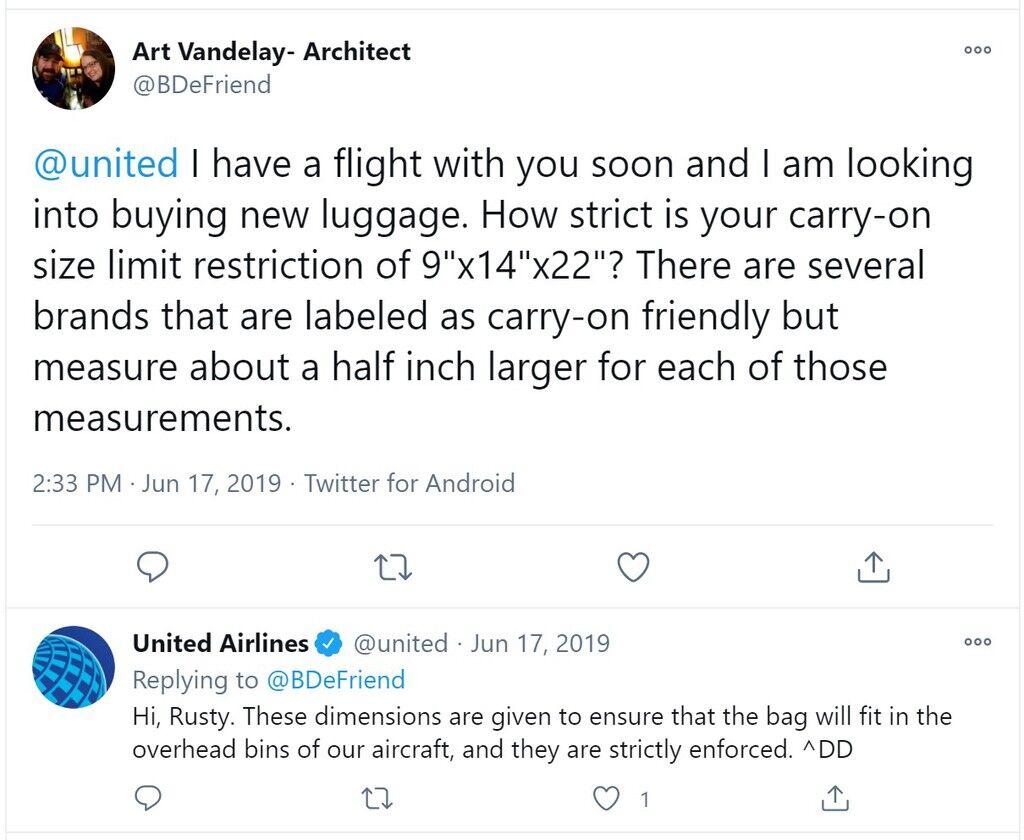Ever found yourself standing in front of the baggage check counter, wondering if your carry-on will pass muster with United Airlines? Well, you’re not alone. Many travelers are curious about how strict United is when it comes to carry-on size. And honestly? It’s a valid concern. Airlines can be pretty particular about luggage dimensions, especially when it comes to saving space in those overhead bins.
United Airlines has very clear guidelines for carry-on baggage, but enforcement can vary depending on factors like the time of year, airport, and even the gate agent you encounter. So, how strict is United really? That’s the million-dollar question we’re here to answer today. Whether you’re flying for business or leisure, knowing these rules beforehand can save you a ton of stress—and possibly even money.
In this article, we’ll break down everything you need to know about United’s carry-on policies, including size limits, enforcement practices, and some insider tips to help you navigate the system. So grab a snack, sit back, and let’s dive into the world of carry-ons and carry-on drama.
Table of Contents
- United's Carry-On Policies
- What Are the Size Limits for Carry-Ons?
- How Strict is United in Enforcing Carry-On Size?
- Why Does Carry-On Size Matter?
- What About Personal Items?
- When Does Gate Checking Happen?
- Tips for Avoiding Carry-On Drama
- Are There Any Exceptions to the Rules?
- Real Traveler Experiences with Carry-On Enforcement
- Final Thoughts on United's Carry-On Policy
United's Carry-On Policies
Let’s kick things off by talking about the basics. United Airlines allows passengers to bring one carry-on bag and one personal item on board, provided they meet specific size and weight requirements. Now, here’s where it gets interesting—while the rules are clearly outlined, enforcement can sometimes feel like a game of chance. Some days, you might breeze through security without a second glance at your bag. Other times? You could be asked to check that precious carry-on for a fee.
So, what exactly are the rules? According to United, your carry-on should not exceed 22 inches x 14 inches x 9 inches (including handles and wheels). Anything larger than that runs the risk of being flagged as oversized. But don’t worry—we’ll get into more details about enforcement later.
Why Size Limits Matter
It’s worth noting that these size restrictions aren’t just random numbers pulled out of thin air. They’re designed to ensure there’s enough space in the overhead bins for everyone on board. Overstuffed bins can lead to delays, and nobody wants that. Plus, keeping carry-ons within the specified dimensions helps streamline the boarding process.
What Are the Size Limits for Carry-Ons?
Alright, let’s zoom in on the nitty-gritty details. United’s official carry-on size limit is 22 inches x 14 inches x 9 inches. This includes any external features like handles, wheels, or pockets. If your bag measures even an inch over, there’s a good chance you’ll be asked to check it—or worse, pay extra for doing so.
But wait, there’s more! The weight of your carry-on also matters. While United doesn’t explicitly state a weight limit for carry-ons, bags that are excessively heavy may raise eyebrows during security checks. A good rule of thumb is to keep your carry-on under 40 pounds to avoid any issues.
Here’s a quick summary:
- Maximum dimensions: 22 inches (length) x 14 inches (width) x 9 inches (height)
- Weight guideline: Under 40 pounds
How Strict is United in Enforcing Carry-On Size?
This is the part where things get a little unpredictable. While United has strict guidelines in place, enforcement can vary widely depending on several factors. During peak travel seasons like holidays or summer vacations, gate agents tend to be more vigilant about carry-on sizes due to the higher volume of passengers. On quieter days, however, you might find that no one even glances at your bag.
At some airports, you might encounter a sizer—a metal frame used to measure carry-ons. If your bag doesn’t fit inside the sizer, you’ll likely be asked to check it. But again, not all airports use sizers consistently, so your experience can differ from one terminal to another.
Factors That Influence Enforcement
Here are a few things that can impact how strictly United enforces carry-on size:
- Time of Year: Holidays and peak travel periods see stricter enforcement.
- Airport Location: Larger airports tend to be more consistent with enforcement than smaller ones.
- Gate Agent: Some agents are stricter than others, so your experience may vary.
Why Does Carry-On Size Matter?
Now, you might be wondering, “Why does the size of my carry-on even matter?” Well, it all boils down to efficiency and safety. Overhead bins have limited space, and if too many passengers bring oversized bags, it can lead to chaos. Not only does this slow down the boarding process, but it also increases the likelihood of delays. Additionally, having oversized or heavy bags in the cabin poses safety risks, particularly during turbulence or emergencies.
By sticking to the recommended size limits, you’re helping ensure a smoother flight experience for yourself and your fellow travelers. Plus, who doesn’t love being that responsible passenger everyone secretly admires?
What About Personal Items?
In addition to your carry-on, United allows passengers to bring one personal item onboard. This could be a purse, laptop bag, backpack, or other small item that fits under the seat in front of you. Personal items are typically smaller than carry-ons and don’t count toward the size or weight limits for your main carry-on bag.
However, it’s important to note that personal items must still fit within certain dimensions. Ideally, they should be no larger than 18 inches x 14 inches x 8 inches. Anything bigger might attract unwanted attention from gate agents.
Tips for Choosing the Right Personal Item
When selecting a personal item, consider the following:
- Choose something compact and easy to stow under the seat.
- Avoid bulky or irregularly shaped items that could take up extra space.
- Opt for a versatile bag that can hold essentials like your phone, wallet, and snacks.
When Does Gate Checking Happen?
Gate checking occurs when there’s simply no room left in the overhead bins. If this happens, a gate agent may ask you to check your carry-on at the gate for free. While this saves you from paying a checked bag fee, it does mean you’ll have to wait to retrieve your bag upon arrival. This can be inconvenient, especially if you were planning to access items during the flight.
That said, gate checking is usually a last resort. Most flights have enough space to accommodate carry-ons, especially if passengers follow the size guidelines.
How to Minimize the Chances of Gate Checking
Want to avoid gate checking altogether? Here’s what you can do:
- Board as early as possible to secure overhead bin space.
- Stick to the recommended carry-on size and weight limits.
- Pack efficiently to make the most of your bag’s interior space.
Tips for Avoiding Carry-On Drama
Let’s face it—traveling can be stressful enough without worrying about whether your carry-on will pass muster. Here are a few tips to help you sidestep any potential drama:
- Measure Your Bag: Before your trip, double-check your carry-on against United’s size limits.
- Pack Light: Less is more when it comes to carry-ons. Only bring what you absolutely need.
- Invest in a Quality Bag: Look for a durable, well-designed carry-on that maximizes space while staying within the size limits.
- Know the Rules: Familiarize yourself with United’s carry-on policies so you’re prepared for anything.
Are There Any Exceptions to the Rules?
While United’s carry-on policies apply to the vast majority of passengers, there are a few exceptions worth noting. For example, passengers with disabilities or medical conditions may be allowed to bring additional items onboard, such as mobility aids or medical equipment. Similarly, parents traveling with infants may bring strollers, car seats, and other baby gear without it counting against their carry-on allowance.
It’s always a good idea to check with United directly if you have special circumstances that might affect your carry-on options.
Real Traveler Experiences with Carry-On Enforcement
Curious about what real travelers have to say about United’s carry-on enforcement? Here are a few anecdotes from people who’ve been there, done that:
“I once had a gate agent measure my carry-on with a sizer, even though it clearly fit the dimensions. They were super strict that day, but on another flight, no one even looked at my bag.”
“I learned the hard way that even if your bag fits the size limits, weight can still be an issue. I had to check my carry-on because it was too heavy.”
“During holiday season, enforcement is definitely stricter. I’ve seen people get turned away at the gate because their bags were too big.”
Final Thoughts on United's Carry-On Policy
So, how strict is United about carry-on size? The answer, as you’ve probably gathered by now, is “it depends.” While the airline has clear guidelines in place, enforcement can vary based on factors like time of year, airport location, and individual gate agents. That said, following the size and weight limits is your best bet for avoiding any headaches.
By measuring your carry-on beforehand, packing smartly, and staying informed about United’s policies, you can minimize the chances of encountering issues. And remember, when in doubt, it’s always better to err on the side of caution.
Have you ever had an experience with United’s carry-on enforcement? Share your story in the comments below, and don’t forget to check out our other travel tips for more ways to make your next flight smoother and stress-free!


